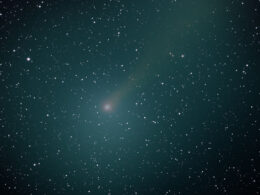Astronomers have used the Hubble space telescope to get a close-up view of a remarkable head-on crash between two asteroids. The giant space rocks created a spectacular trail of debris as they collided at 11,000mph – five times the speed of a rifle bullet – between the orbits of Mars and Jupiter.
Author
I have been a journalist and author for over 40 years. I have written for magazines including BBC Sky at Night BBC Focus, Astronomy Now, Radio Times and I was editor of Popular Astronomy. I have also written three books on astronomy and contributed to others. I am a Fellow of the Royal Astronomical Society and help run the Society for Popular Astronomy to help beginners to astronomy.


 The cosmic pile-up is the first ever witnessed in the asteroid belt, 90 million miles away in space. A fragment from the same family of asteroids is thought to have wiped out the dinosaurs 65 million years ago.
The cosmic pile-up is the first ever witnessed in the asteroid belt, 90 million miles away in space. A fragment from the same family of asteroids is thought to have wiped out the dinosaurs 65 million years ago. The heart of the main rock, labelled P/2010 A2, can be seen as a bright star-like point outide its own halo of dust. This nucleus is estimated to be about 460 ft wide.
The heart of the main rock, labelled P/2010 A2, can be seen as a bright star-like point outide its own halo of dust. This nucleus is estimated to be about 460 ft wide.


